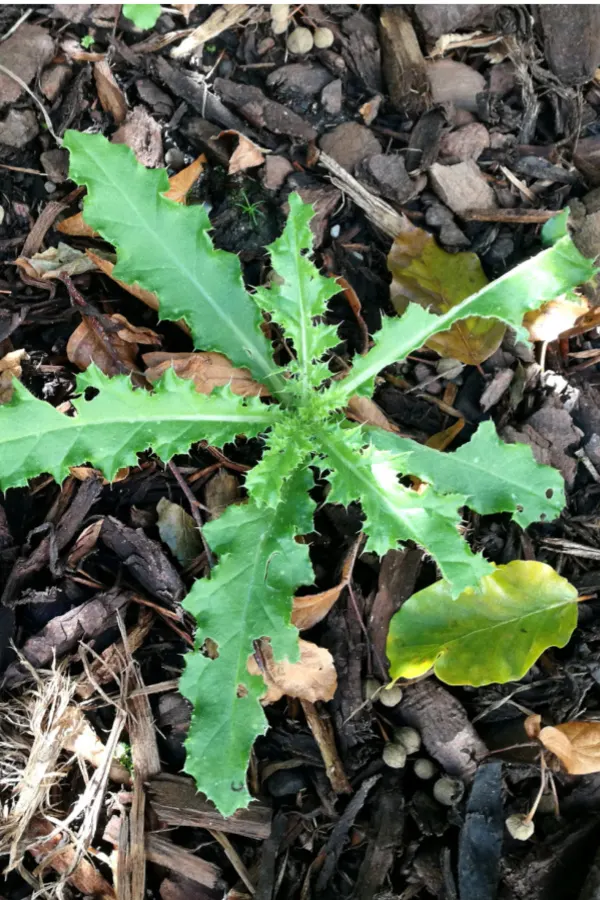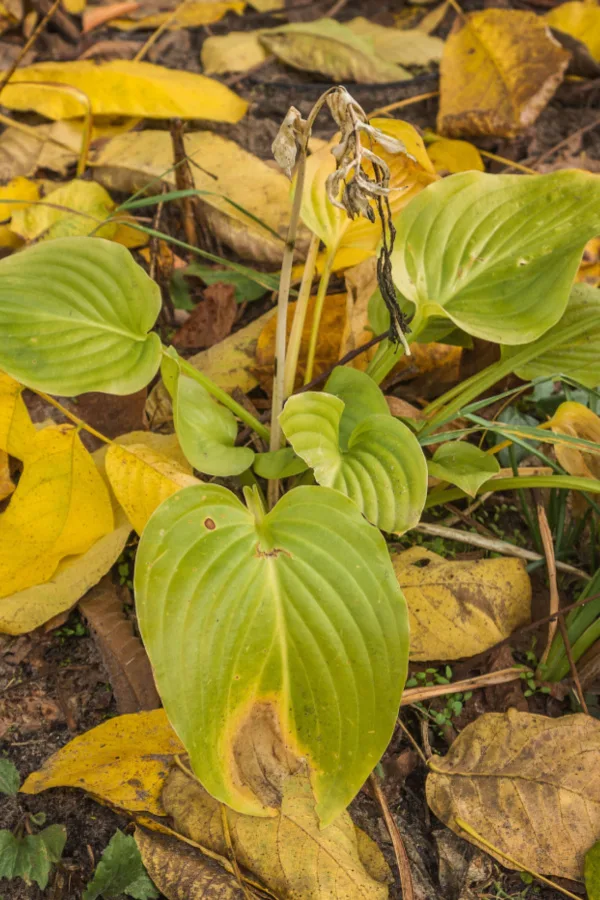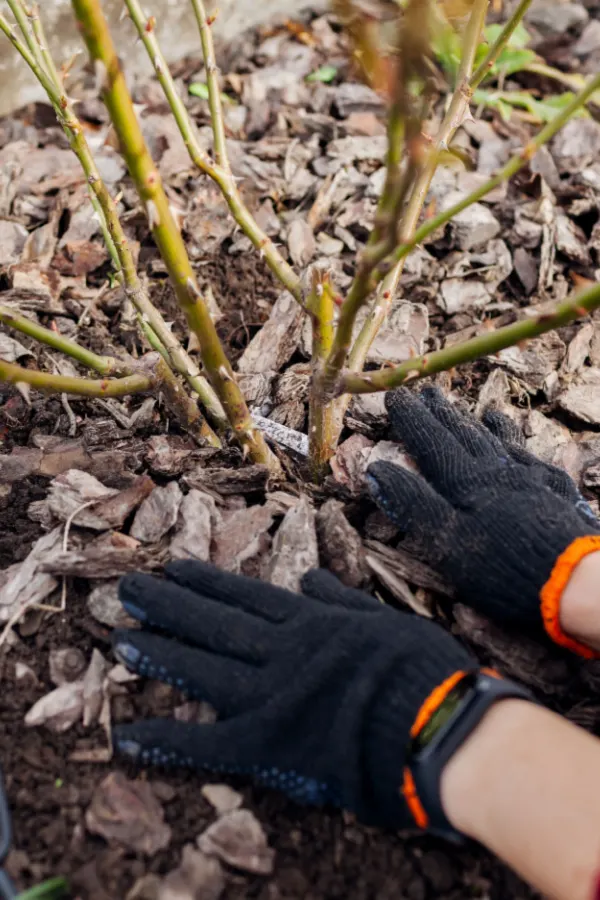Autumn is here – and as the leaves fall more rapidly from the trees with each passing day, that means winter is not far behind – which makes it all the more important to take time now to prepare your flowerbeds for the upcoming blustery weather!
Believe it or not, fall flowerbed care is just as important if not more important than spring and summer care. Especially when it comes to maintaining flowerbeds that have healthy plants, few pests, and little to no weeds.
One of the biggest mistakes gardeners make in the fall with their flowerbeds is to do nothing at all. Although your plants might be done blooming and the foliage might be dying back – it doesn’t mean it’s time to pack it in.

Late fall care is critical in protecting plants from the upcoming winter. And, as you will see below, it can also play a massive role in helping to eliminate next year’s weeds and weeding chores!
How To Prepare Flowerbeds For Winter – 3 Must Do Chores To Do In Late Fall
#1 Fall Weeding
Fall is a critical time to clear weeds from your flowerbeds. Just because they may die back from a frost or freeze – it doesn’t mean they won’t come back next year. In fact, by letting them live now, you actually help them come back stronger than ever next spring.
By mid fall, most weeds form their seed heads. Unfortunately, when you let weeds remain in place, those seeds eventually fall to the soil. And when they do, they plant thousands of potential weeds for next spring and summer.
But there is also another very important reason to remove weeds now. Although their foliage may die back for winter, their roots remain very much alive. And when left in the ground, those roots use up the moisture, nitrogen, potassium, phosphorous and other trace minerals your perennials need for survival.

Even worse, in the case of invasive weeds such as thistle, they can continue to grow under the warm soil nearly all winter long. And when spring rolls around, can come back with a vengeance!
That is why it’s important to take time now to remove the existing weeds in your flowerbeds and their seed heads. The good news? Fall’s wetter conditions and cooler weather make it far easier to do than in the dry, hot conditions of summer.
#2 Removing Dying Plants & Blooms – How To Prepare Flowerbeds For Winter
In addition to any weeds that may be lingering in your beds, it’s also important to remove any dying and decaying foliage and blooms from your plants. That includes both annual and perennial plants.
Why? Not only will leaving the dying foliage and blooms make your beds look less than desirable, more importantly, all of that decaying plant foliage can cause big issues next year if allowed to overwinter in your flowerbeds.

Annuals such as petunias, marigolds and impatiens are full of seed heads on their blooms. If allowed to overwinter, those seed heads sprout to become next years volunteer weeds. Even worse, their decaying foliage becomes an ideal host for insects and disease to multiply and lie in wait.
Clear your beds of any and all annuals in late fall. With annuals, it’s also best to remove their roots. Again, the decaying roots can easily harbor insects and disease.
In addition, be sure to remove any potted or container annuals placed in or near flowerbeds as well. The seed pods can easily blow into nearby flowerbeds, causing the same seed-sprouting weed issues next year.
Cutting Back Perennials – How To Prepare Flowerbeds For Winter
Now it’s time to tackle your perennial plants – or more precisely, your herbaceous perennial plants. Not all perennial bushes and plants need to be cut back in the fall. Some, like hydrangeas, rhododendrons and azaleas, need to be left alone to keep next year’s blooms in tact.
However, herbaceous perennials, which are plants whose foliage dies back to the ground each year, should always be cut back before winter arrives.
Just like dying annuals, decaying plant matter is perfect for pests to use as both a food source and cover. Allowing the old foliage to remain also makes it easy for mold, mildew and disease to gain a foothold.

The easiest way to cut back plants is with a sharp pair of hedge trimmers. Just slip them under the dying foliage and cut within a few inches of the ground. All of that dying foliage is perfect for your compost pile. Just don’t forget to first remove and seed heads to prevent volunteers in your compost pile!
One thing you don’t want to do at this point is fertilize any of your perennial plants, shrubs or bushes. Late fertilizing can actually spur on unwanted late growth both above and below ground. Unfortunately, any late season growth not only burns precious energy from the plant, it also puts it at risk of freezing out.
Now that your flowerbeds are clear of weeds and old plant foliage – they are ready for the final step to prepare them for winter – a thick layer of fall mulch!
Mulching Flowerbeds In The Fall – How To Prepare Flowerbeds For Winter
So many gardeners place a huge emphasis on spring mulching. And for good reason. But in many ways, fall mulching is actually more important. Not so much for looks, but for stopping next year’s weeds and providing protection for plants through winter.
Flowerbeds left bare through the winter are easy access for blowing and drifting weed seeds to find a home. And once they do, they will plant themselves and lie in wait until spring. Bare soil also leaves perennial roots more vulnerable to freezing out in extremely cold weather.

If that wasn’t enough, leaving the soil wide open also allows precious top soil to wash away. Unprotected soil erodes easily from winter’s winds, rain and snow.
Mulching Fall Flowerbeds – How To Prepare Flowerbeds For Winter
If you want truly want to gain the upper hand next year on weeds and weeding, it all begins this fall with a thick coat of protective mulch. But how you apply it can be just as important in the process.
Unfortunately, a big mistake gardeners often make in the fall is to turn or flip the mulch already in their beds. Some do it to freshen up the look so they don’t have to add mulch. Others do it to clean up the beds before adding more. Sadly, both cause more weeds than ever!
When you stir existing mulch and soil – you replant any and all weeds seeds that were laying dormant on the soil. The less you disturb the old mulch the better. Instead, simply top coat flowerbeds with a thick 4 inch layer of new mulch.
Not only will it help protect against weeds, it will also help insulate the roots of your perennials from winter’s fury. And best of all – it will have your beds looking great all winter, and ready to grow like crazy next spring!
Jim and Mary Competti have been writing gardening, DIY and recipe articles and books for over 15 years from their 46 acre Ohio farm. The two are frequent speakers on all things gardening and love to travel in their spare time.
As always, feel free to email us at thefarm@owgarden.com with comments, questions, or to simply say hello! You can sign up for our free email list in the subscribe now box in the middle of this article. Follow us on Facebook here : OWG Facebook. This article may contain affiliate links.
